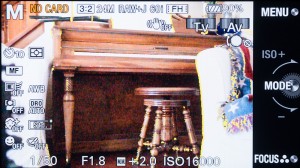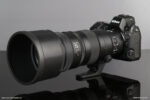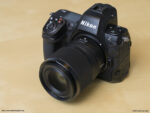Operation and Menus

I found the NEX-7 to be a relatively well-thought out camera with regards to the controls and operation, though there were a few quirks. The dials and some buttons are programmable, allowing you to set up the camera to operate how you’d like them to operate. Because of the well laid out controls and the flexibility in button customization, the camera can be set up to the photographer’s liking.
The menu system is broken down into six main menu sections, though sometimes settings weren’t in the section you’d expect, and the individual sections are LONG, with many, many options to scroll through. This can make things a little daunting when trying to find a setting you want to change. Overall, though, there weren’t any major issues with the menu system.
One thing that I did find a little jarring was the lack of a touch screen. While touch screens are somewhat newer additions to cameras, after using them extensively on my Micro 4/3 cameras for the past two years, it was a little hard to remember that I couldn’t set focus points by simply touching on the screen. While these touch features are very welcome, and I enjoy having them, once I got over that fact and became comfortable with the camera, it wasn’t really an issue. However, I think that it would be wise of Sony to add this functionality to future cameras.
Screen and Viewfinder

The rear screen and viewfinder for the NEX are both high quality and high resolution. There is a proximity sensor that will switch to the EVF when the camera is raised to your face, and it works well, though it’s not perfect. While the sensor on the Olympus OM-D is too sensitive, and often switches when holding the camera at waist level for shooting, the one in the NEX-7 is not quite sensitive enough, and you really need your eye in good position before the switch occurs. As a result, there is a small delay when the camera switches to the EVF.
In good light, the EVF is beautiful. It’s very high resolution and is quite sharp. It can have a little too much contrast, however, and in high contrast scenes, blacks will block up pretty easily. However, it’s merely a cosmetic issue, as you can still easily frame and focus your shots. In good light, it’s among the best EVFs available. However, in dim light, both the EVF and rear screen will become quite noisy and moderately laggy. You can see the noise visible in a low light situation by clicking on the image above, showing the rear screen of the NEX-7.
Focus Peaking
One awesome feature of the NEX-7 is focus peaking. This is especially helpful for users of adapted manual focus lenses, as it highlights the in-focus areas of the image in a color of your choice. I chose yellow, as it stood out enough to be noticed, but wasn’t distracting to me when composing an image. You can also select white or red. (Clicking on the screen image in the previous section, you can see the focus peaking display on the edges of the chair)
I found the focus peaking mode to work relatively well, and it was especially helpful on more distant subjects. It certainly works better with higher contrast lenses, especially in portraiture. I found shooting something like my Hexanon 57mm f/1.2 wide open didn’t provide enough contrast in portraits to allow for the focus peaking to work well. However, in those situations, the EVF was clear enough to allow for accurate manual focus regardless. This should be in every EVF equipped camera. Period.
Performance
The NEX-7 is a responsive camera. The camera starts up quickly and operates quickly as well. Shutter lag is nearly non-existent, with near instantaneous shutter response once the button is pressed. The camera is capable of shooting at 10 frames per second when locking focus beforehand, and 3.7 fps when continually focusing, however, like all cameras using contrast-detect autofocus, the continuous autofocus left a little to be desired.
Autofocus performance in single shot was quite nice, though I only had the 24mm to test. While not quite as quick as some of the fastest mirrorless cameras around, it’s certainly fast enough for most anything. The camera locked focus surely and accurately.
However, there is one big failure of the NEX-7’s autofocus system. In any sort of low light, the camera will switch off single point autofocus and revert to full area AF. So, instead of focusing on a single point, it will choose something to be in focus over the entire frame. This happens at, in my opinion, a ridiculously bright level: EV 5. That is, f/1.8, ISO 1600 and 1/125s (or whatever combination of that exposure). This is NOT that dim of a condition, and is frankly about the level of a typical room in my home at night. After further research, it appears that you can avoid this by turning off the AF assist light at the expense of AF speed. Still, this is a very baffling design decision that is unnecessary. Given the good high ISO performance of this camera, it is strange to me that they would hamper the autofocus in dimmer light like this.
Flash
Unfortunately, I failed to test the built-in pop-up flash. I tend to use flash with portrait type subjects, which demand softer light from bounced flash, and it completely slipped my mind to test the pop-up flash for this review. Since the camera is now back at Lens Rentals, I can’t retroactively test it. However, it brings up another point:
The NEX-7 contains a proprietary Sony hotshoe. As I don’t have any Sony flashes, I also couldn’t test the hotshoe, or take images with the NEX even using my manual flashes. It is a very odd decision in my opinion to have a proprietary hotshoe on a camera of this caliber…it eliminates everything but Sony accessories, including my wireless flash triggers and manual flashes. Luckily, the newer NEX-6 has replaced the Sony hotshoe with a standard center-fire hotshoe. I would assume that any future NEX cameras will have the standard shoe.






Leave a Reply